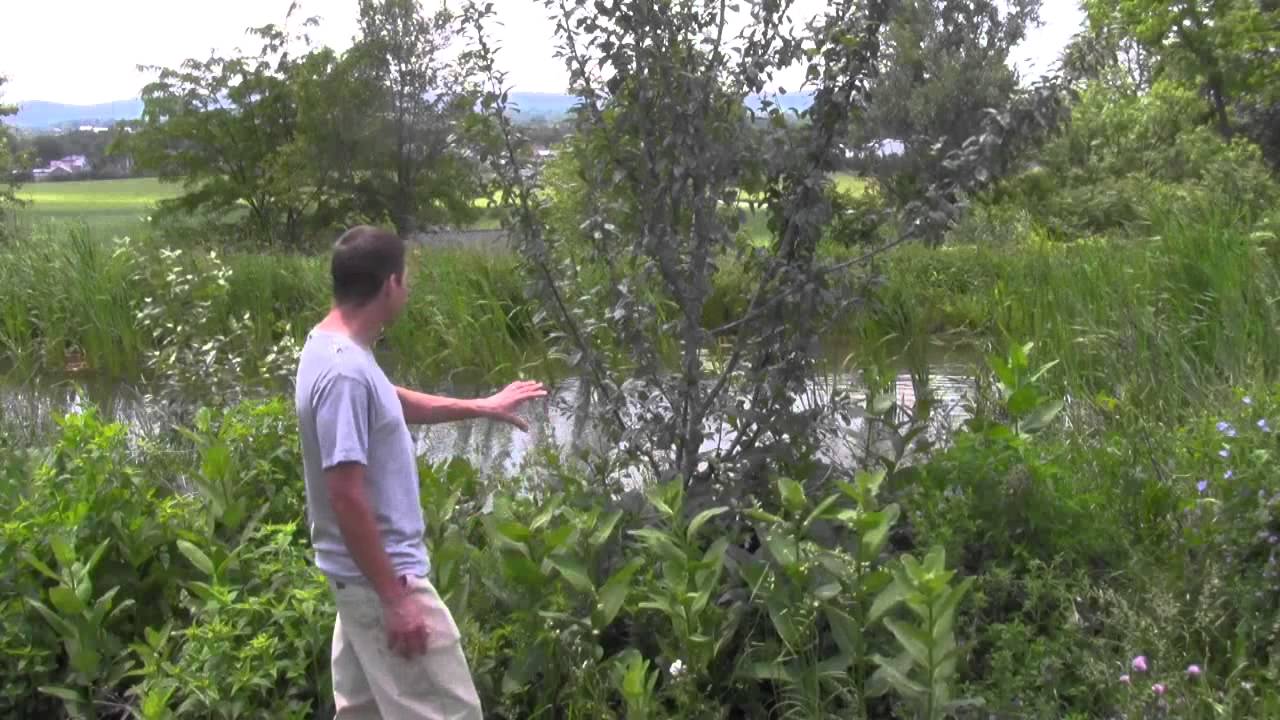Polyculture or the growing of many different plants in a given area is a popular permaculture principle. Fruit tree guilds are a specific polyculture technique used to improve fertility, confuse pests, and attract beneficial insects, as well as provide increased yields.
Plum, elderberry, yarrow, chicory, red clover, shasta daisy, parsnip, plantain
I’ve grown my fruit and nut trees in guilds with understory plants that help my trees. When I first started into permaculture, the idea that plants could help each other, thereby eliminating the need for fertilizers, pesticides, and outside inputs really captivated me. I have since grown my own guilds with varying degrees of success. For me, it hasn’t been a panacea of perfection, where I no longer have any maintenance to do, because my helper plants are doing all the work. They have certainly helped, but I’m not sure how realistic it is to expect to plant a fruit tree guild with a grafted high value fruit tree, and then not have to do any work to get quality fruit.
I think this can work with mature ungrafted varieties planted in appropriate microclimates, but in my experience, grafted varieties require a little more work. Also, it is not easy to establish good working guilds. In Gaia’s Garden, a book I love by the way, Toby Hemenway has diagrams of perfectly planted guilds in concentric circles. I don’t think it’s practical, nor economically feasible for most of us to plant this precisely, not to mention the constant maintenance to keep the guild in balance. I think it is more practical to mix the seed of the plants that you want to grow under and around your tree and sow the seeds. Mother Nature will determine what grows where.
Plum, comfrey, alfalfa, clover, chicory, milkweed, oregano, yarrow, autumn olive
Having said all that, that doesn’t mean I don’t like to grow my trees with guilds, I certainly do, and I think Gaia’s Garden is a fantastic resource for what plants to put into your guild and why. Below are some of the plants that I’ve put into my guilds:
Mulberry, goumi, comfrey, alfalfa, chicory, milkweed[/caption]
Alfalfa- Nitrogen fixer, attracts beneficial insects with flowers. Easy to seed.
Autumn Olive- Nitrogen fixing small tree. Berries beneficial to wildlife. Invasive.
Chicory- Nutrient accumulator, blooms from June until frost. Grows and seeds itself rampantly. Can get a bit tall, so you have to cut them back around your trees if they’re short.
Chives- Pest deterrent. Can get overtaken by taller guild members.
Clover- Nitrogen fixer, attracts beneficial insects with flowers. One of my favorites, easy to seed.
Garlic- Pest deterrent. Plant in fall from bulbs.
Goumi- Nitrogen fixing shrub. Produces nice berry. Good for wildlife. Not invasive like Autumn Olive.
New Jersey Tea- Nitrogen Fixing shrub. Can grow in shade.
Oregano- Pest deterrent, flowers bring in beneficial insects. One of my absolute favorite guild members.
Plantain- I never sow this, but it comes on its own. I welcome it as it is a nutrient accumulator.
Russian Comfrey (Not True Comfrey)- True comfrey produces seed, which can overtake your guild in time. Russian comfrey grows tall and vigorously from root cuttings. I love comfrey as it is a fantastic nutrient accumulator that produces flowers for a long duration. I plant one comfrey root per fruit tree. Do not plant more than one as it will take up too much space in the guild.
Yarrow- Also one of my favorites. Produces the tiny flower that predator insects like. Is also a nutrient accumulator that looks beautiful.
Pear, goumi, alder, comfrey, oregano, chicory, yarrow, alfalfa[/caption]
~ Phil Williams
Phil Williams is a permaculture consultant and designer and creator of the website foodproduction101.com. He is also the author of numerous books, most recently, Fire the Landscaper and Farmer Phil's Permaculture. His website provides useful, timely information for the experienced or beginning gardener, landscaper, or permaculturalist. Phil's personal goals are to build soil, restore and regenerate degraded landscapes, grow and raise an abundance of healthy food of great variety, design and install resilient permaculture gardens in the most efficient manner possible, and teach others along the way.
This is a companion discussion topic for the original entry at https://peakprosperity.com/fruit-tree-guilds/









